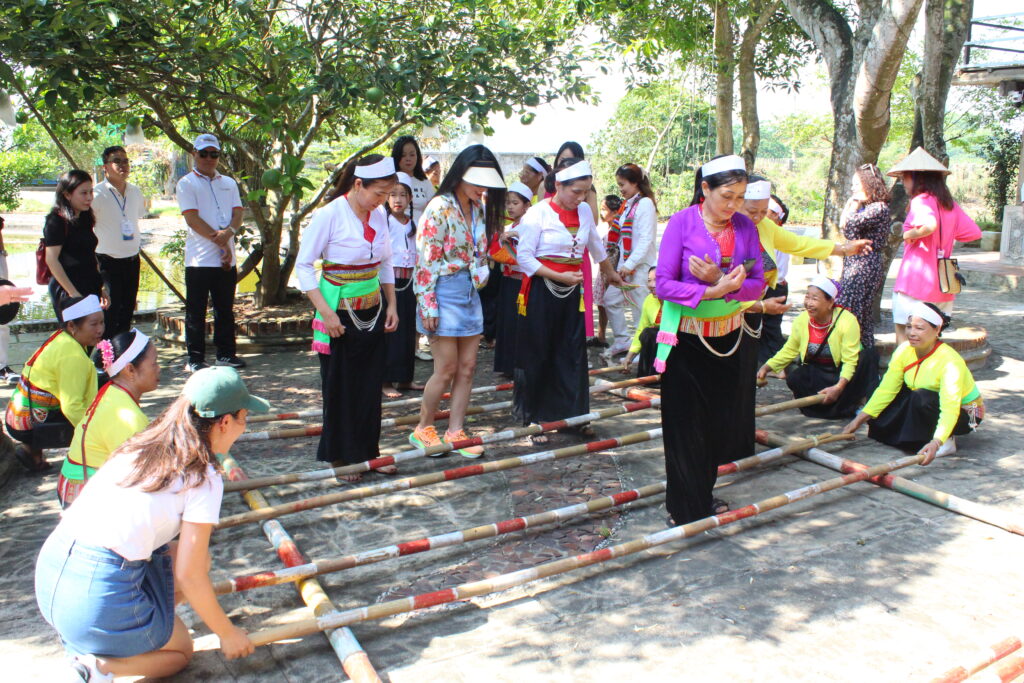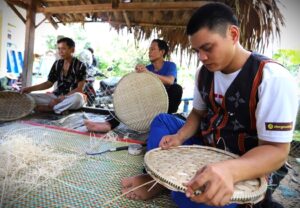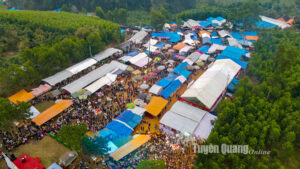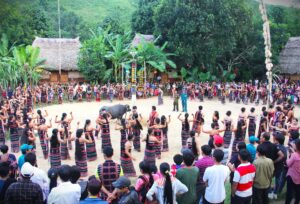Bamboo dancing – a unique cultural feature of the Northwest people
(TITC) – Bamboo dancing is a unique and distinctive cultural feature of ethnic minorities in the Northwest highlands. The vibrant dances of ethnic minorities are maintained in exchanges, meetings and community activities.
Xoe dance and bamboo dance are both unique folk dances that bring people a joyful atmosphere. It not only carries the cultural identity of the Northwest ethnic group but also contains the feelings, character, and soul of the mountain ethnic people. Among them, bamboo dance, also known as bamboo dance, is enjoyed by many people.

To have a beautiful and elaborate bamboo dance, it is necessary to prepare a main bamboo pole (2 large, long and straight bamboo poles); and many small bamboo poles, all of which are 3 to 4 m long and 3 to 4 cm in diameter. To start with the bamboo dance, people will place two bamboo poles at a certain distance from each other. Then, the two ends are placed with small bamboo poles placed parallel to each other. Just like that, line up in a long row (the distance between the small stalls is about 1 hand span, enough for the legs to jump easily).
The bamboo dance team will be divided into 2 groups. 1 group will be in charge of smashing bamboo and the other group will be bamboo dancing. With the bamboo dance group, it is required to dance with the right rhythm and tempo. There must be skillful movements of the arms and legs. Otherwise, you will step on the stall and ruin the whole dance. As for the person who hits the stall, he must move his hand very steadily, in the right rhythm at a moderate speed. Usually at first the speed of the pole hitting will be slow to make it easier for the dancer to get into the action. Later on it will be faster and more intense, increasing the difficulty.
Bamboo dance is a unique and characteristic cultural feature of ethnic minorities in the highlands. People often organize bamboo dances on the occasion of festivals… It is a form of folk performance with entertainment; connecting the community, and is also a ritual dance; closely associated with the lives of agricultural residents. Bringing this dance into collective activities is a way to promote and introduce the culture of ethnic minorities in a realistic and vivid way. Through this activity, ethnic people send a message of solidarity and unity in ethnic communities and villages.
Tourism Information Technology Center




